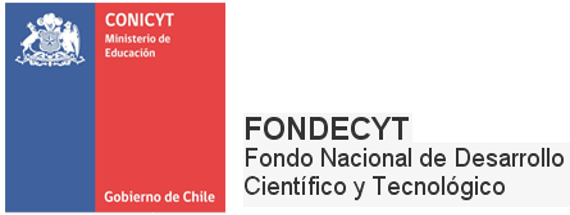15 enero, 2015
21 Nuevos Proyectos Fondecyt Regular 2015 – Facultad de Ciencias Biológicas UC

Recientemente se anunció el fallo del concurso Fondecyt Regular 2015 de la Comisión Nacional de Ciencia y Tecnología (CONICYT). La institución educacional con más proyectos adjudicados fue la Universidad de Chile con 123 proyectos aprobados y en segundo lugar se encuentra la Pontificia Universidad Católica con 108 proyectos aprobados.
De los 108 proyectos adjudicados a investigadores UC, 21 corresponden a miembros de la Facultad de Ciencias Biológicas ya sea como directores o co-investigadores. A continuación los nuevos proyectos adjudicados que comenzarán en 2015:
- Nurr1/CoREST complexes controlling gene expression in dopamine neurons (María Estela Andrés).
- Identification of novel transcription factors involved in the ripening of grapevine berry in response to sugars (Patricio Arce).
- Participation of mesenchymal progenitors in the initiation of skeletal muscle fibrosis: Effect of TGFβ/CTGF/PDGF and co-factors on fibroblasts’ ability to modulate myogenesis (Enrique Brandan).
- Exosome-mediated RNA transfer from Schwann cells to neurons: impact over axonal regeneration and neuronal survival (Felipe Court).
- Metaspring: Genomics, metagenomics and metaviromics of hot spring microorganisms (Beatriz Díez).
- Role of mitochondria fusion proteins Opa‐1 and Mfn2 specific mutations, on the pathogenesis of mitochondrial diseases (Verónica Eisner).
- Control and coordination of microvascular vasomotor tone by nitric oxide-dependent regulation of connexin- and pannexin-formed gap junction channels or hemichannels (Xavier Figueroa).
- Role of the D1-dopamine and type 2-corticotropin releasing hormone receptors heteromer in stress-induced relapse to psychostimulant-seeking behavior (Katia Gysling).
- Uncovering the role of the carotid body chemoreceptors in the development of the hypertension during chronic intermittent hypoxia: is oxidative stress necessary to activate the chemoreflex pathway? (Rodrigo Iturriaga).
- Elucidating the mechanisms of pathogenicity used by the human respiratory syncytial virus to prevent T cell activation and cause central nervous system inflammation (Alexis Kalergis).
- Spatial Biology of Microbes: linking cell biophysics to ecosystem dynamics (Juan Keymer).
- Marine radiocarbon reservoir effects from Holocene archaeological shell middens as a proxy for past coastal upwelling in northern Chile: local or regional? (Claudio Latorre).
- Reelin-induced ApoER2 receptor trafficking and signaling: functional crosstalk with endosomal proteins, ARF6 and SNX27. Implications for cell migration and neuronal polarity (María Paz Marzolo).
- A mixture of endocrine disruptors (phtalates and alkylphenols) impair male and female gonadal function by regulating microRNAs that control sex steroid hormone levels (Ricardo Moreno).
- Trait-based structure of reef fishes: towards an understanding of assembly rules across biogeographic scales (Alejandro Perez Matus).
- Characterization of the molecular mechanism underlying the role of mirystic, palmitic, palmitoleic acid as beneficial signaling molecules in the heart (Cecilia Riquelme).
- Neuronal derived factor(s) and mechanism(s) that repress the expression of non-selective ion channels in normal adult skeletal muscles (Juan Carlos Saez).
- Leaf traits from Cenozoic to present climate; are there common relationships? (Luis Hinojosa y Fernanda Perez).
- HO-1 expression protects from kidney damage induced by innate immunity during lupus nephritis (Carolina Llanos y Alexis Kalergis).
- VEGF-A signaling in carcinoma-associated fibroblasts: role in reactive stroma generation and metastatic potential (Viviana Montecinos y Alejandro Godoy).
- Searching for common mechanisms leading to neuronal and liver damage in Niemann-Pick diseases (Silvana Zanlungo y Alejandra Alvarez).
